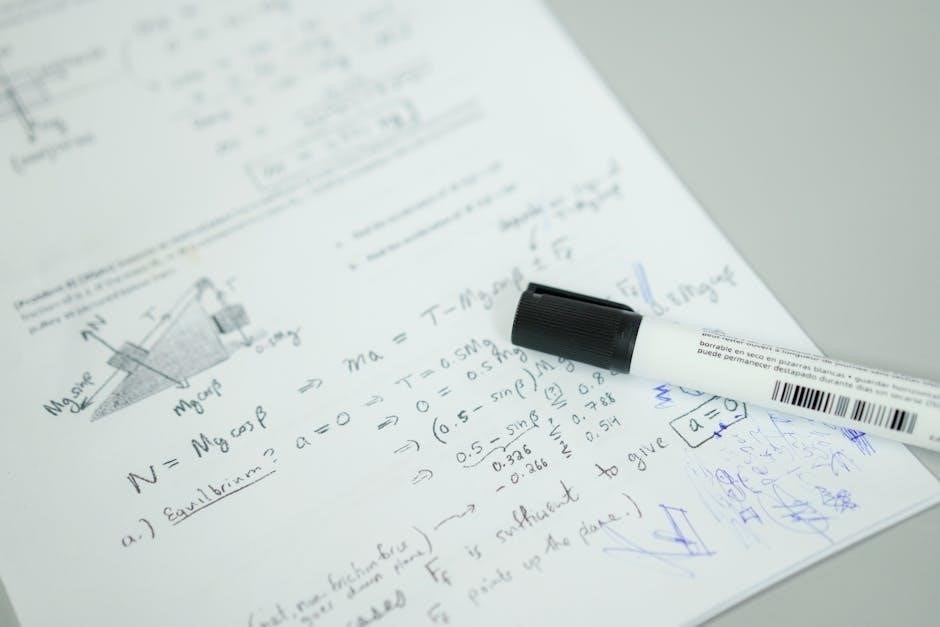The Cursed Alpha and His Forced Luna: A Deep Dive
Numerous online platforms offer access to “Cursed Alpha and His Forced Luna” stories, often in PDF or ebook formats, catering to a dedicated fanbase seeking immersive werewolf romance narratives․
Origins of the Forced Mate Trope in Werewolf Fiction
The roots of the “forced mate” trope within werewolf fiction are complex, evolving from early depictions of pack dynamics and the crucial role of the Luna․ Initially, pairings were often about strengthening the pack’s lineage, sometimes disregarding individual desires․
As the genre matured, particularly with the rise of online fanfiction and webcomics, the trope gained darker edges, exploring themes of power imbalances and control․ The “cursed alpha” element amplifies this, introducing external pressures – prophecies, curses, or political machinations – that dictate the mating bond․
PDF compilations and online stories frequently showcase this dynamic, where the alpha’s curse necessitates a specific mate, often leading to a forced union with a Luna who possesses unique qualities or a destined role․ This creates inherent conflict and narrative tension, driving the plot forward․
The Alpha and Luna Dynamic: Power and Responsibility
Traditionally, the Alpha embodies strength, leadership, and protection for the pack, while the Luna serves as a vital counterpart, often representing compassion, fertility, and stability․ This dynamic, frequently explored in “Cursed Alpha and His Forced Luna” narratives, isn’t simply about romance; it’s about shared responsibility․
However, the “forced” aspect introduces a significant power imbalance․ The Alpha’s authority is rarely questioned, and the Luna may initially lack agency, becoming a pawn in fulfilling a prophecy or breaking a curse․ Stories available in PDF format often delve into the Luna’s struggle to navigate this constrained role․
The narrative tension arises from the Luna’s journey to assert her own power and influence, challenging the Alpha and reshaping the pack’s future․ This exploration of power dynamics is central to the genre’s appeal․
Curses in Werewolf Lore: Historical Context
Historically, curses within werewolf mythology often stem from transgressions against nature, broken oaths, or ancient magic, frequently manifesting as physical ailments or limitations on power․ In “Cursed Alpha and His Forced Luna” stories, these curses frequently dictate the forced mate dynamic, binding the Alpha to a Luna as a means of breaking the affliction․
PDF versions of these tales often reveal that the curse isn’t merely a punishment, but a complex narrative device․ It serves to explore themes of fate, redemption, and the consequences of past actions․ The curse frequently impacts the Alpha’s ability to lead, creating vulnerability․
The Luna, therefore, isn’t just a mate, but a potential key to restoring balance and lifting the curse, adding layers of intrigue and emotional weight to the storyline․
Common Tropes in “Cursed Alpha” Stories
Frequently found within “Cursed Alpha and His Forced Luna” narratives, several tropes consistently captivate readers․ Forced marriage serves as a central plot device, driven by the curse’s stipulations or pack necessity․ Breeder/mate dynamics, though controversial, explore themes of power and lineage, often found within PDF story collections․
Secret baby tropes heighten narrative tension, introducing unexpected complications and emotional stakes․ The Alpha’s curse often necessitates a specific lineage, making the Luna’s fertility crucial․ These stories commonly feature disappearing packs, linked to the Alpha and Luna’s lineage․
Readers are drawn to the established Alpha/mate dynamic, and the initial chapters effectively establish power imbalances and the setting’s rules, readily available in digital formats․
Forced Marriage as a Plot Device
Within “Cursed Alpha and His Forced Luna” stories, forced marriage isn’t merely a plot point; it’s often the catalyst for the entire narrative․ The curse frequently dictates the Alpha must marry to break it, and the Luna is often chosen – or forced – to fulfill this requirement․ PDF versions of these tales highlight the initial resistance and subsequent development of a bond․
This trope generates immediate conflict, exploring themes of agency, power dynamics, and the blurring lines between duty and desire․ The Luna’s initial reluctance and the Alpha’s often ruthless demeanor create compelling tension․ It’s a common element in online stories, readily accessible in digital formats․
Ultimately, forced marriage becomes a vehicle for character growth and the unraveling of the curse’s origins․
Breeder/Mate Dynamics and Their Implications
The “Breeder/Mate” dynamic, prevalent in many “Cursed Alpha and His Forced Luna” narratives, introduces complex and often controversial themes․ Frequently found within PDF versions of these stories, this trope centers around the Luna’s perceived role in producing heirs to strengthen the Alpha’s lineage or break a curse․ It often involves a power imbalance and a lack of consent․

This dynamic explores the societal pressures within the werewolf pack and the Luna’s struggle for autonomy․ The implications extend to questions of bodily agency and the commodification of reproduction․ Online stories often grapple with the ethical concerns, portraying the Luna’s resilience and eventual reclamation of her power․
Ultimately, the trope serves as a catalyst for challenging traditional werewolf societal norms․
Secret Baby Tropes and Narrative Tension
The “Secret Baby” trope is a cornerstone of tension in many “Cursed Alpha and His Forced Luna” stories, readily available in PDF format online․ It typically unfolds when the Luna conceives a child, often during a period of forced proximity or a clandestine encounter with the Alpha․ This secret introduces immediate conflict – concealing the pregnancy from the pack, navigating the Alpha’s possessiveness, and facing potential repercussions if discovered․
Narrative tension escalates as the Luna grapples with her feelings for the Alpha, the safety of her child, and the potential for political upheaval within the pack․ The revelation of the baby often serves as a turning point, forcing characters to confront their truths and challenging established power dynamics․

These stories frequently explore themes of forbidden love and unexpected parenthood․
Character Archetypes
Within the “Cursed Alpha and His Forced Luna” genre, frequently found in PDF ebooks, distinct character archetypes dominate the narratives․ The Cursed Alpha is often portrayed as brooding, powerful, and burdened by a dark past or supernatural affliction, driving the central conflict․ Conversely, the Forced Luna embodies resilience, often initially resisting the Alpha’s dominance but ultimately discovering inner strength․
Supporting characters include loyal beta allies, scheming rivals, and wise elders who offer guidance or pose obstacles․ These archetypes are frequently explored, with variations in their motivations and backstories․ The dynamic between the Alpha and Luna, fueled by forced proximity and evolving emotions, forms the core of the story․
Readers find themselves invested in their journeys․

The Cursed Alpha: Traits and Backstories
Frequently encountered in “Cursed Alpha and His Forced Luna” stories, often available as PDF downloads, the Cursed Alpha archetype is defined by a complex blend of power and torment․ Common traits include a brooding demeanor, immense physical strength, and a commanding presence, often masking deep-seated pain․ Their curses manifest in various forms – a dark birthmark, a magical affliction, or a tragic past event․
Backstories typically involve betrayal, loss, or a lineage tainted by dark magic, explaining their initial ruthlessness․ These alphas often struggle with controlling their inner beast and fear harming those around them․ The forced mate situation arises as either a means to break the curse or exacerbate it, creating compelling narrative tension․
The Forced Luna: Resilience and Agency
Within “Cursed Alpha and His Forced Luna” narratives, readily found as PDF ebooks, the Forced Luna is rarely a damsel in distress․ Instead, she embodies remarkable resilience and often possesses hidden strength․ Initially presented as vulnerable, she quickly demonstrates agency, challenging the Alpha’s dominance and navigating treacherous pack dynamics․
Her backstory frequently involves loss – orphaned, betrayed, or sold into servitude – fueling her determination․ Despite being forced into a mating bond, she refuses to be a passive victim, actively working to protect herself and potentially heal the Alpha’s curse․ The Luna’s character arc often centers on discovering her own power and reshaping the pack’s future․
The Role of Prophecy in the Narrative
Frequently, “Cursed Alpha and His Forced Luna” stories, accessible as PDF downloads, are driven by ancient prophecies․ These foretell the Alpha’s curse, the Luna’s arrival, and the fate of the pack, creating a sense of inevitability and high stakes․ The prophecy often dictates the forced mating, framing it not as mere coercion, but as a necessary event to break the curse or avert a greater disaster․
However, prophecies are rarely straightforward; they’re open to interpretation, leading to conflict and suspense․ Characters struggle to understand their roles and challenge the predetermined path, adding layers of complexity․ The Luna’s agency often lies in fulfilling – or subverting – the prophecy’s expectations, ultimately shaping her own destiny․
Black Birthmarks and Their Significance
Within the “Cursed Alpha and His Forced Luna” genre, readily available as PDF ebooks, black birthmarks frequently symbolize a dark destiny or a hidden curse․ As highlighted in several narratives, a child born with such a mark is often ostracized or feared, perceived as a harbinger of misfortune․ This mark can signify a connection to forbidden magic, a lineage tainted by ancient powers, or a destined role in a looming conflict․
For the Luna, a black birthmark often represents her unique ability to break the Alpha’s curse, but also makes her a target․ The Alpha may initially view the mark as a threat, yet ultimately recognize its importance in fulfilling a prophecy or securing the pack’s future․
Pack Dynamics and Social Hierarchy
Exploring “Cursed Alpha and His Forced Luna” stories, often found in PDF format, reveals intricate pack structures․ Alphas reign supreme, wielding absolute authority, while Lunas, their chosen mates, offer counsel and maintain pack harmony․ Below them are Betas, serving as enforcers and second-in-command, ensuring order and loyalty․ Omegas, often depicted as the weakest link, fulfill essential roles despite facing prejudice․

The forced mate dynamic disrupts this hierarchy, challenging the Alpha’s control and forcing adaptation․ A cursed Alpha’s pack may be fractured by distrust, while the Luna’s arrival can either unite or further divide them, depending on her acceptance and strength․
The Blood Moon and its Symbolic Meaning
Within “Cursed Alpha and His Forced Luna” narratives, frequently available as PDF downloads, the Blood Moon serves as a potent symbol of transformation and heightened power․ It often amplifies a cursed Alpha’s abilities, potentially exacerbating his condition or triggering unforeseen consequences․ For the forced Luna, the Blood Moon can represent a trial, testing her resilience and connection to her mate․
Prophecies frequently intertwine with the Blood Moon, foretelling doom or offering a chance for redemption․ The lunar event can also unlock hidden magic or reveal crucial secrets about the Alpha’s curse, driving the plot forward and intensifying the romantic tension․
Exploring the Omegaverse

Many “Cursed Alpha and His Forced Luna” stories, readily found as PDFs online, incorporate the Omegaverse framework, establishing a rigid social hierarchy․ Alphas dominate, exhibiting strength and possessiveness, while Omegas are often portrayed as vulnerable and submissive – a dynamic frequently challenged within the narrative․ The forced mate trope intensifies this power imbalance, particularly when the Luna is an Omega․
These stories often explore the biological imperatives of the Omegaverse, including mating bonds and fertility, adding layers of complexity to the romance․ The cursed Alpha’s condition may disrupt these natural dynamics, creating conflict and forcing characters to confront societal norms․

Alpha/Omega/Beta Dynamics Explained
Within the “Cursed Alpha and His Forced Luna” genre, frequently available as PDF downloads, the Alpha/Omega/Beta dynamic is foundational․ Alphas, the dominant force, possess strength and often a possessive nature, while Omegas are typically presented as the most vulnerable, often linked to fertility․ Betas occupy a middle ground, exhibiting traits of both but lacking the extremes․

The cursed Alpha’s status often complicates these roles; his curse might amplify his Alpha traits or introduce instability․ The forced Luna, potentially an Omega, faces unique challenges navigating this power imbalance, especially when a mating bond is involved․ These dynamics fuel conflict and drive the narrative forward, exploring themes of control and submission․
The Weakest Link: Omega Roles and Challenges
Frequently found within “Cursed Alpha and His Forced Luna” stories, often distributed as PDF files, Omega characters are often portrayed as physically weaker, yet possessing vital reproductive capabilities․ This vulnerability makes them targets, particularly in narratives involving forced mating or breeder dynamics․ The “weakest link” label isn’t simply physical; Omegas often face societal prejudice and limited agency․
However, modern interpretations are shifting, showcasing Omega resilience and hidden strengths․ The forced Luna, often an Omega, may subvert expectations, challenging the Alpha’s dominance and reclaiming her power․ These narratives explore themes of overcoming oppression and finding strength in perceived weakness, adding depth to the genre’s complexities․
Popularity and Appeal of the Genre
The surging popularity of “Cursed Alpha and His Forced Luna” stories, readily available as PDF downloads and online reads, stems from a potent blend of escapism and emotional intensity․ Readers are drawn to the power dynamics, forbidden romance, and the exploration of primal instincts․ The trope offers a framework for examining themes of control, consent, and ultimately, transformative love․
Furthermore, the genre’s accessibility – through platforms offering free stories and easily shareable PDFs – fuels its widespread appeal․ The inherent drama, coupled with the fantasy element of werewolves and curses, provides a captivating narrative experience․ The Alpha/Luna dynamic, with its inherent tension, consistently draws in a dedicated audience․
Where to Find “Cursed Alpha and His Forced Luna” Stories Online
Numerous online platforms host “Cursed Alpha and His Forced Luna” stories, frequently offered as free reads or downloadable PDF files․ Webnovel, Wattpad, and similar sites are prime locations, boasting extensive libraries of user-generated content․ Dedicated fan forums and social media groups also share links to stories and PDF compilations․
Additionally, several websites specialize in paranormal romance, featuring curated collections of werewolf fiction, including this popular trope․ Searching for specific keywords like “cursed alpha PDF” or “forced luna online” yields a wealth of results․ However, exercise caution regarding copyright and source reliability when downloading PDFs․
Analyzing Reader Engagement and Fan Theories
Reader engagement with “Cursed Alpha and His Forced Luna” stories is exceptionally high, fueled by dramatic plotlines and emotionally charged relationships․ Discussions surrounding character motivations, particularly the alpha’s curse and the luna’s resilience, dominate online forums․ Fan theories often center on the origins of the curse and the true nature of the prophecy, frequently shared as text or PDF analyses․
The prevalence of PDF-formatted fanfiction and detailed character studies indicates a dedicated fanbase actively dissecting and expanding upon the core tropes․ Common theories explore hidden connections between characters and speculate on alternative endings, demonstrating a deep investment in the narrative universe․
Future Trends in Cursed Werewolf Romance
The “Cursed Alpha and His Forced Luna” subgenre is poised for continued evolution, with emerging trends focusing on nuanced character development and challenging traditional power dynamics․ Expect to see more stories exploring the psychological impact of forced mating and the luna’s agency within restrictive societal structures․ Increased demand for diverse representation, including LGBTQ+ pairings and non-traditional pack hierarchies, is anticipated․

Accessibility through platforms offering PDF downloads and online reading will remain crucial․ Authors may experiment with incorporating elements from other paranormal romance genres, creating hybrid narratives․ Greater emphasis on world-building and intricate magic systems could further captivate readers, solidifying the genre’s enduring appeal․






































































